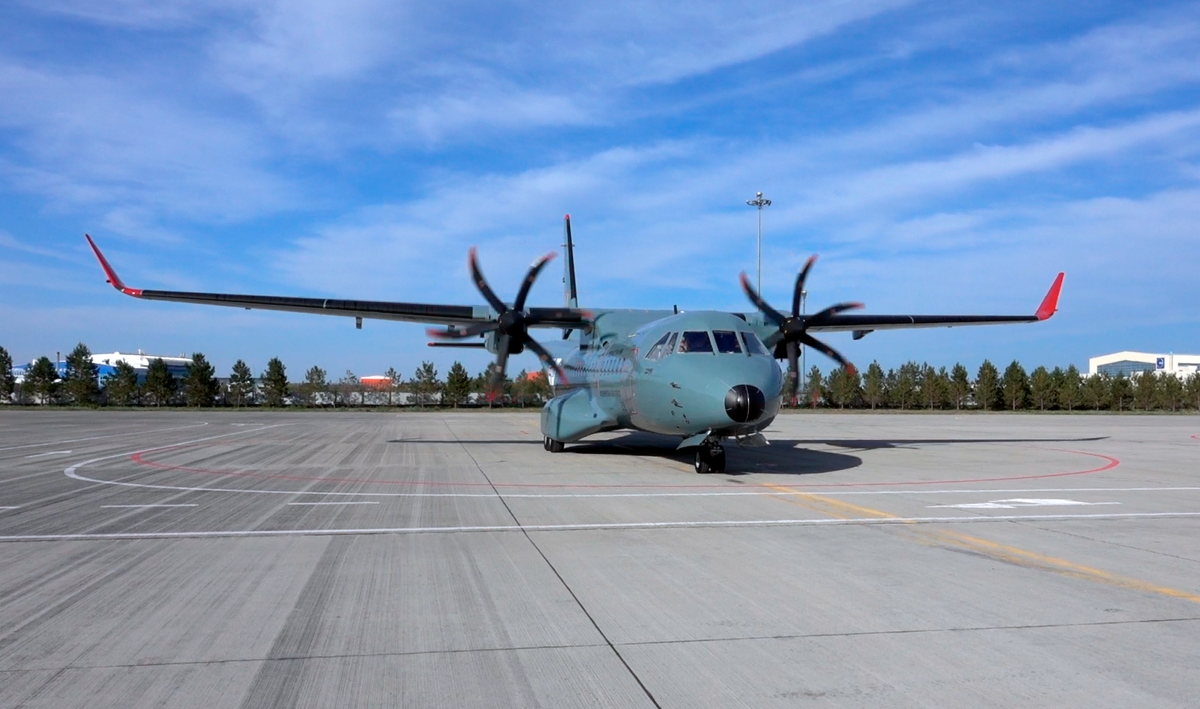The newly introduced C-295MW military transport aircraft, produced by the Spanish company Airbus Defence and Space, has been incorporated into the arsenal of the Air Defense Forces and has arrived at the airbase in Astana. Manufactured at the facility in Seville, Spain, this new aircraft marks the inaugural implementation of the C295MW configuration.

This fresh iteration has garnered considerable attention. A number of aircraft have already been procured by the Czech Air Force and Brunei, while India has established a joint venture to produce these cargo planes. As for its price, one C-295MW, according to the British publication Janes, is valued at $34.4 million, which is $6 million higher than the standard C-295.
The C-295MW, conceived by Airbus Defence and Space, represents a twin-turboprop transport aircraft. Its distinctive feature lies in its high-wing configuration, which effortlessly facilitates efficient rear loading. This design advantage is paired with an impressive capability: the aircraft can execute short take-offs and landings on semi-prepared runways, underscoring its maneuverability in accessing a range of operational and crisis zones. Additionally, the C295MW boasts a useful payload 900-1000 kg greater than its predecessor, the C295M, with fuel consumption reduced by 3-4%, a ceiling raised by 1400 m, and improved characteristics for high-altitude flights.
The aircraft can accommodate a total of 71 servicemen or 50 paratroopers on board. Such adaptability enables the C-295MW to excel in various roles, including VIP transport, medical evacuation, military operations, and charitable humanitarian missions.
The cabin of the C-295MW showcases a modern glass design, incorporating large Thales color liquid crystal displays that are fully compatible with night vision goggles. The aircraft's navigational qualities are characterized by an array of options for long-range and autonomous navigation, encompassing integrated inertial navigation and global positioning systems (INS/GPS) that meet various operational requirements.
Encompassing a spacious cabin measuring 12.7 meters in length, the internal configuration of the aircraft can be flexible, accommodating up to 71 passengers. Notably, this cabin is equipped to support missions of medical evacuation, accommodating 27 patients on stretchers and four medical personnel. This level of adaptability extends to cargo transport, with sufficient space within the cabin to accommodate three cars, Land Rovers or their equivalents, or up to five pallets measuring 2.24 m x 2.74 m.
The C-295MW is propelled by two Pratt & Whitney Canada PW127G turboprop engines, each delivering an output of 1972 kW, which can be increased to 2177 kW through automatic power reserve. Paired with six-blade composite HS-568F-5 propellers developed by Hamilton Sundstrand, these engines provide the aircraft with impressive flight performance characteristics. Moreover, with a fuel capacity of 7700 liters, the C-295MW can cover 5630 kilometers and can be extended through in-flight refueling using an additional probe.
The aircraft features a retractable landing gear system designed by Messier-Dowty, tailored for operations on semi-prepared runways. This feature, combined with Dunlop differential disc brakes with hydraulic drive and an anti-skid system, enhances the aircraft's operational reliability.
In conclusion, the C-295MW stands as a testament to engineering ingenuity, adroitly combining combat prowess with adaptability across a wide spectrum of tasks, from military to humanitarian, and encompassing a multitude of useful payloads.